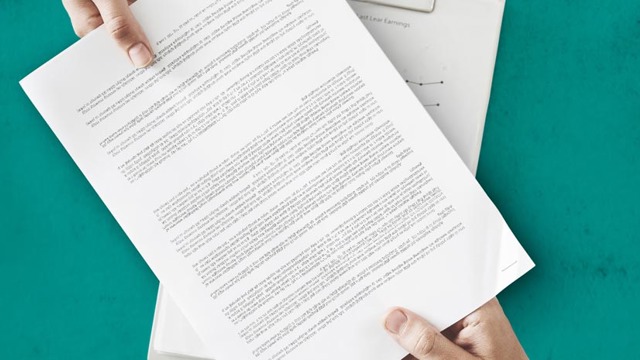This article is Part 3 in our five-part series addressing the issues you may be facing with the introduction of the Trusts Act 2019 (Act) coming into force 30 January 2021.
Parts 1 and 2 of our series (available here and here) focused on the new information retention and disclosure regime, trustees' duties under the Act, and the more restricted circumstances in which a trustee can be exempted and/or indemnified from liability.
In Part 3, we look at the position of third party creditors. This can be a complex area of law, particularly if the claims involve insolvent (or near insolvent) corporate trustees, necessitating consideration of trusts, company, and insolvency law.
While the Act largely replicates the existing position in relation to trustee liability, it makes one significant change that may make (careful) creditors' claims against trust assets easier. In short, creditors will now have, for the first time, a limited (direct) claim against the trust property.
Position at common law
A trust is not (contrary to popular – and occasionally professional – opinion) a distinct legal entity but rather a legal relationship between parties. Pursuant to that relationship, the trustee is the legal owner of the property. When a creditor contracts with a trust, they are contracting with the trustee. Accordingly, and importantly, the trustee is personally liable to creditors for all debts and liabilities incurred.
Why, then, do trustees take on the role? Because the law recognises that they are entitled to be indemnified from the trust property for all trust debts and liabilities properly incurred. Indemnity is "the price paid by the [beneficiary] for the gratuitous and onerous services of trustees."1
The trustees' right of indemnity comes in two forms:
-
First, a trustee may be reimbursed for debts and liabilities it has properly incurred in the administration of the trust and discharged out of its own funds.
-
Secondly, a trustee is entitled to apply trust property directly to discharge debts and liabilities properly incurred in the administration of the trust.
Creditors who have claims against the trust (that is, the trustee) cannot directly claim against or access the trust property, without security. Instead, their claim is against the trustee personally, who relies on the right of indemnity to meet the obligation. Problems arise where the trustee has insufficient or no assets (eg in the case of a corporate trustee with no assets of its own other than the trust assets) to satisfy the creditors' claims.
In those circumstances, creditors may seek to rely on the trustee's right of indemnity to indirectly access trust property via the process of subrogation, an equitable remedy. This means the creditor is able to "stand in the shoes" of the trustee and rely on its right of indemnity to satisfy their claim as far as possible. The remedy of subrogation gives creditors indirect access to trust property in circumstances where they would otherwise have no claim against such property. It is an important remedy that gives creditors some comfort when contracting with trustees.
However, the remedy of subrogation may be unavailable where the trustee's indemnity is "impaired". This can happen easily and without the creditor's knowledge. For example, a trustee's earlier and unrelated breach of trust can impair its indemnity and leave the creditor exposed because its ability to subrogate will be useless (there is no indemnity to subrogate to).
The New Zealand Law Commission recognised this problem and the harsh effects it can have on creditors during its review of the law of trusts.
Position under the Act: An important change for creditors
The Act largely replicates the previous position although there is one important change for creditors.
Section 81 confirms that a trustee:
-
is personally liable for expenses or liabilities incurred when acting as a trustee; and
-
is entitled to be indemnified from the trust property for expenses or liabilities it incurs when acting reasonably on behalf of the trust.
However, Section 86 now gives creditors a limited (direct) claim to trust property through the trustee's right of indemnity when certain conditions are met. The purpose of section 86 is to improve the perceived harshness of creditors being denied the benefit of subrogation to satisfy their (valid) claims against the trust where the trustee's indemnity has been impaired because of an earlier and unrelated breach of trust.
A creditor will have a claim against the trustee that may be satisfied by the creditor being indemnified from the trust property if either:
-
the trustee has a right to be indemnified (ie, the indemnity is not impaired or lost); or
-
the trustee has lost the right of indemnity or full indemnity, but:
-
the creditor has given value;
-
the trust has received a benefit from the transaction; and
-
the creditor has acted in good faith.
-
If these conditions are met, the creditors' claims are limited to the benefit received by the trust plus interest and must be paid in priority over any payment to a beneficiary (unless a court orders otherwise). A claim under this section does not alter the priority of creditors who are entitled to claim from the trust property.
A creditor will not act in good faith if they have knowledge of the circumstances that impairs the trustee's indemnity (whether or not the creditor knew the circumstances would have that effect).
While ultimately a positive development for creditors, section 86 represents a significant departure from the common law position. Until litigation tests the metes and bounds of this departure, trustees and creditors face real uncertainty as to the application of this provision. In any event, the good faith requirement will mean creditors must continue their practice of due diligence when contracting with a trustee.
Please reach out to one of our experts listed below if you would like to discuss any of the upcoming changes to the Act.











